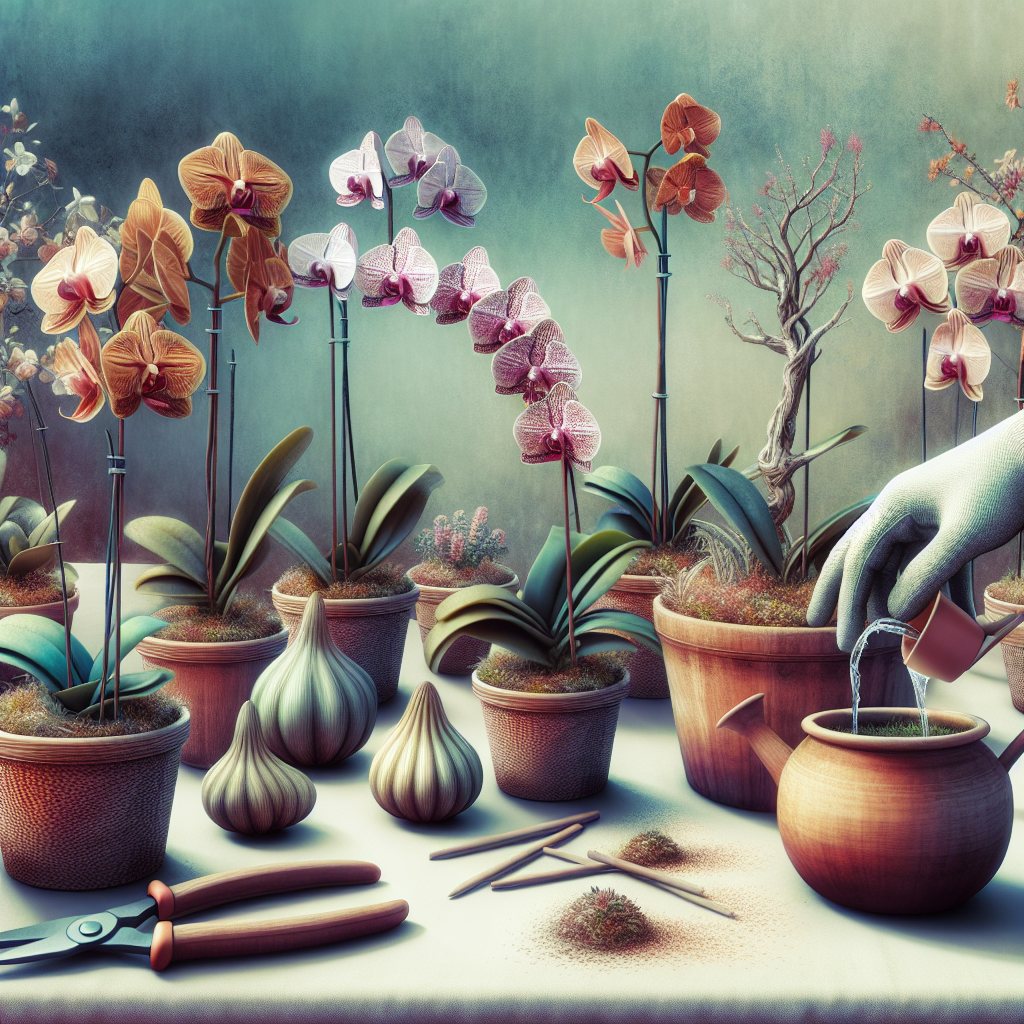Orchids are one of nature’s most beautiful and delicate flowers, prized for their stunning blooms and elegant appearance. Growing orchids in containers is a popular way to enjoy these exotic plants in your home or garden. However, orchids can be notoriously finicky and require specific care to thrive in containers. In this comprehensive guide, you will learn all the essentials of orchid care in containers, from choosing the right type of container to providing the ideal growing conditions for your orchids.
**Choosing the Right Container**
When it comes to growing orchids in containers, choosing the right container is crucial for the health and well-being of your plants. Orchids require excellent drainage to prevent root rot, so it’s essential to select a container with ample drainage holes at the bottom. Plastic or clay pots are popular choices for growing orchids, as they allow for good airflow and moisture control.
**Selecting the Right Potting Mix**
The type of potting mix you use for your orchids can make a significant difference in their growth and blooming. Orchids are epiphytic plants, meaning they naturally grow on trees or rocks rather than in soil. As such, they require a well-draining potting mix that mimics their natural habitat. A common potting mix for orchids is a blend of bark chips, perlite, and sphagnum moss, which provides excellent drainage while retaining some moisture.
**Watering Your Orchids**
Proper watering is essential for the health of your orchids in containers. Overwatering can lead to root rot, while underwatering can cause dehydration and stunted growth. The key is to water your orchids when the top inch of the potting mix feels dry to the touch. Use room-temperature water and allow any excess water to drain out of the bottom of the container to prevent waterlogged roots.
**Light Requirements**
Orchids are light-loving plants that require bright but indirect sunlight to thrive. Place your orchid container near a south- or east-facing window where it can receive plenty of natural light throughout the day. Be cautious not to expose your orchid to direct sunlight, as this can scorch its delicate leaves.
**Temperature and Humidity**
Orchids thrive in warm temperatures ranging from 65°F to 80°F during the day and slightly cooler temperatures at night. Maintaining consistent temperature levels will encourage healthy growth and flowering in your orchid plants. Additionally, orchids prefer high humidity levels between 50% to 70%. You can increase humidity by placing a tray filled with pebbles and water near your orchid container or by using a humidifier.
**Fertilizing Your Orchids**
Fertilizing is an essential part of caring for potted orchids as it provides them with essential nutrients for growth and blooming. Use a balanced fertilizer specifically formulated for orchids, diluted to half strength, every two weeks during the growing season (spring through fall). Avoid fertilizing during the winter months when your plant is dormant.
**Repotting Your Orchid**
As your orchid grows and matures, it may outgrow its container or deplete its potting mix of nutrients. Repotting allows you to refresh the potting mix and provide more space for root growth. Repot your orchid every 1-2 years using fresh potting mix designed for epiphytic plants like bark chips or sphagnum moss.
In conclusion, caring for potted orchids requires attention to detail and proper maintenance practices such as choosing a suitable container, using the right potting mix, watering correctly, providing adequate light levels, maintaining ideal temperature and humidity levels fertilizing regularly repping when necessary By following these essential guidelines on how care successful beautiful thriving potted orchestrate enjoy blooms year-round adding touch elegance home garden
**FAQs about Orchid Care in Containers:**
1) How often should I water my potted orchid?
– Water your potted orchid when the top inch of potting mix feels dry but avoid overwatering.
2) Can I place my potted orchid outside?
– Yes! Just make sure it receives bright but indirect sunlight outdoors.
3) How do I know when it’s time to repot my potted orchid?
– Look out for roots growing over the edges of the container or if you see decreased blooms despite proper care – this may indicate that it’s time to repot.














